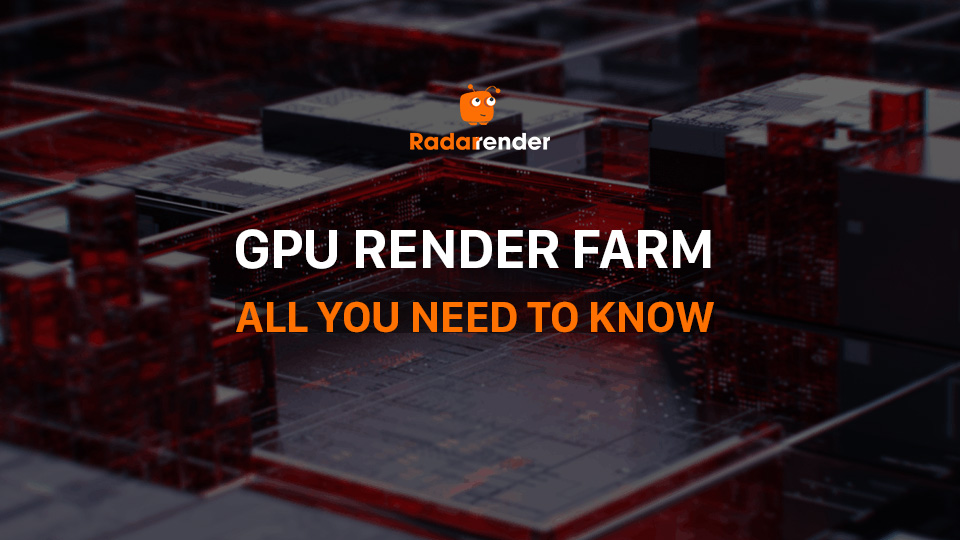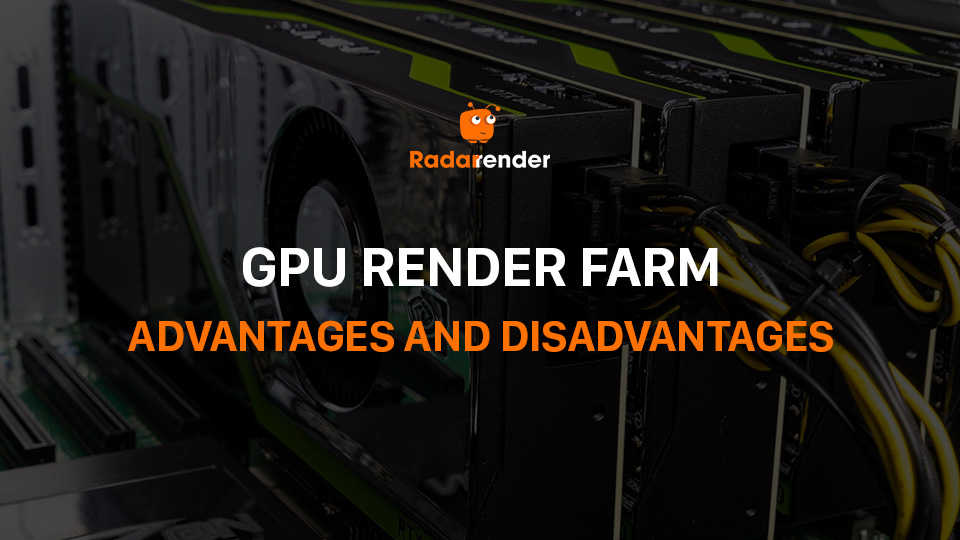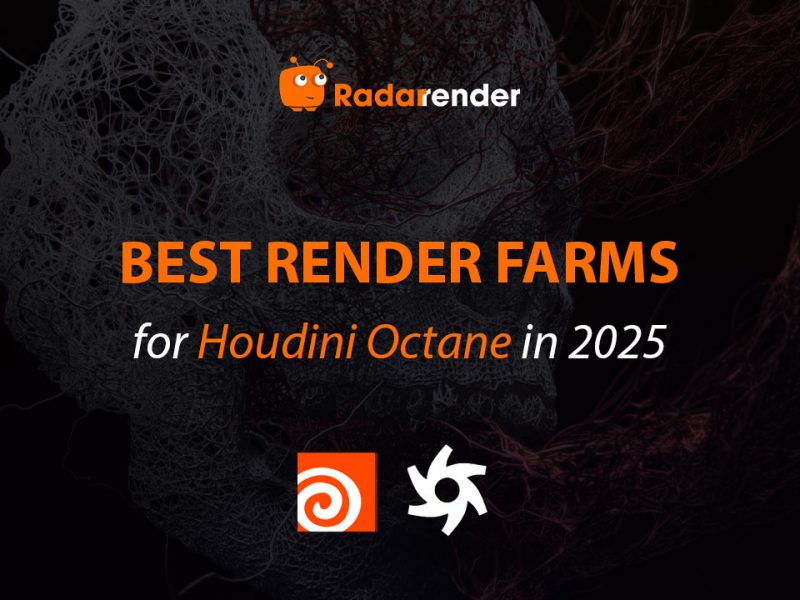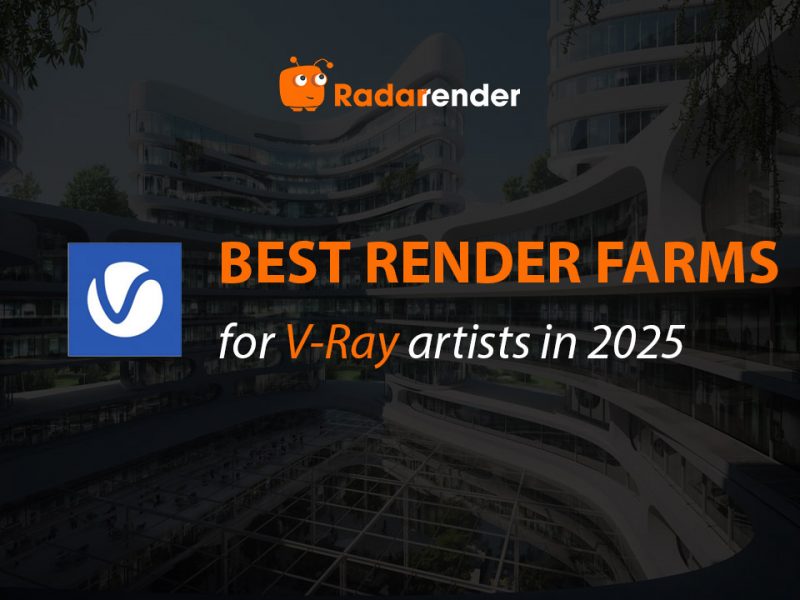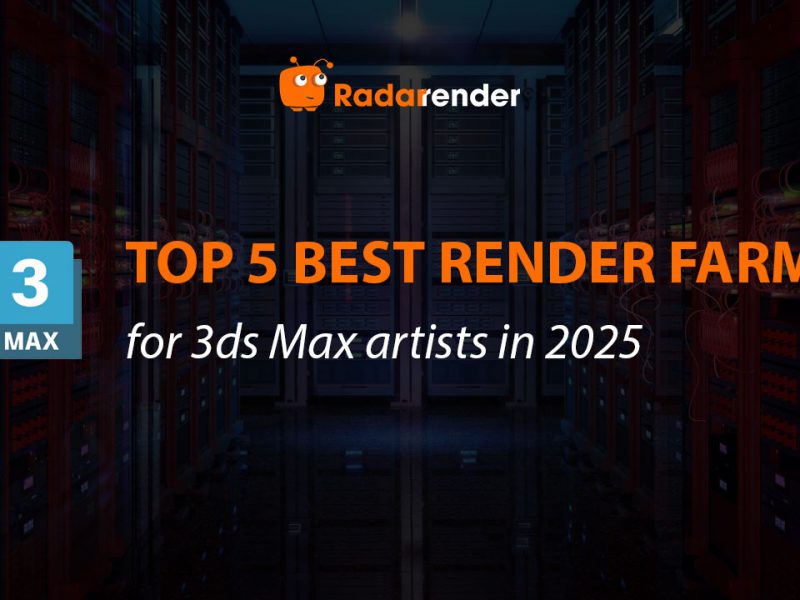GPU Render Farm: All You Need To Know
If you work in the 3D industry, you’re probably familiar with the concept of a render farm. However, a GPU render farm is a concept that you have to go into more detail. So, in today’s article, Radarrender will give you an overview of the GPU render farm. Let’s get started!
Before jumping into GPU render farm, we will go explore GPU Rendering.
Overview of GPU Rendering
GPU stands for Graphic processing unit. It is the most crucial computing technology nowadays and is a type of microprocessor. GPU is used in a wide range of applications, accelerating the rendering process of 3D graphics. Besides being best for their gaming capabilities, GPUs are becoming more popular and it is used to offload some tasks to the CPU, making the computer run faster.
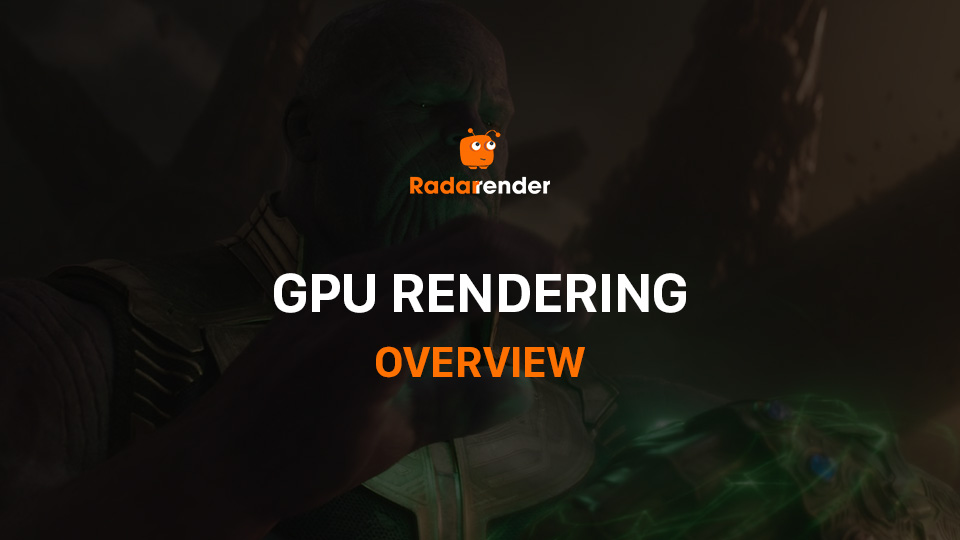
GPU rendering simply means using the GPU as the main “director” in the rendering process. Some names of GPU render engines that are popular and have high-speed render times such as Octane, Redshift, Corona, Lumion, Enscape, Arnold GPU, and so on.
Nowadays, GPU rendering has become popular and the best choice for every 3D artist, studio, production, etc. GPU rendering is generally faster than CPU rendering. A GPU has thousands of cores (RTX 3090 has 10496 CUDA cores, RTX 4090 has 16384 CUDA cores) while a CPU just has up to 64. Although running at a relatively low clock, the huge number of GPU cores helps to speed up them, allowing strong rendering performance. Besides that, GPU can run tasks in a parallel manner, so it can render various elements of a scene simultaneously.
GPUs were getting more powerful and stronger when they were typically used to handle taking the geometry in projects and rendering it in real-time on-screen to provide visual interaction between the user and the computer. So, with the development of GPU rendering, the GPU render farm also followed. Let’s explore GPU render farm in the next part.
What is GPU render farm?
A Render Farm is a high-performance computer system, i.e. a cluster of individual computers linked together by a network connection. They are built to process or render CGI, animation, films, VFX shots, or rendered still images. So what is it? We can simple understanding of a GPU render farm is a render farm that supports GPU rendering.
Some famous name of GPU render farm is Fox Render Farm, Rebus Farm, iRender Farm, and Ranch Computing. Within the scope of this article, we will not cover render farms in detail. We invite you to read the next articles.
Back to the GPU render farm, we continue to discuss advantages and disadvantages.
See more: Top best GPU render farms
Advantages and disadvantages of GPU render farm
Advantages
When using a GPU render farm, you have many benefits like saving your budget, and time and speeding up your workflow. We have some outstanding benefits are powerful rendering speed and support applications.
Powerful and faster rendering
It is the most important thing when you use a render farm, especially a GPU render farm. If the CPU render farms fast, GPU renders farms will be faster. As we mentioned previously, a GPU has a thousand cores with a CPU has only 64 and GPU can run tasks in a parallel manner, it can be able to render quickly. On top of that, multiple GPUs can be used to render a scene. The implication of this is that a workstation has multiple GPU cards. The powerful GPUs can reduce the time it takes to render a file that would have taken you a month to a few days or hours.
Note: Some render farms do not show you exactly the hardware to use in the rendering process. If you care about: What are GPU types used in your rendering process and how many GPUs are to be used? You need to consider them before choosing.
Support applications
More and more 3D packages are available supporting GPU rendering. Some popular name like Redshift, Octanerender, or real-time GPU renderings such as Lumion, Twinmotion, and Unreal Engine. Moreover, many render engines have designed their version for GPU rendering like Arnold, VRay, Maxwell, or in the upcoming time Houdini.
With more support applications, more powerful and easier you have. It is one of the big reasons why you choose a render farm for your rendering process.
Real-time rendering
Real-time rendering is making its way to popular 3d programs like Cinema 4d and Blender, and other applications will certainly follow, but this is something inherent in GPU-based renderers like Redshift and Octane. Being able to interact with a recognized scene in the viewport makes the 3d creation more streamlined than having to show a preview all the time.
Note: if you want to use real-time rendering in the rendering process, you need to use IaaS render farm, because just this render farm allows you to have full control of the rendering process and is free to run rendering when you need. Read more about IaaS render farm vs SaaS render farm here.
Disadvantages
Like many render farm, each GPU render farms have different cons. It not only depends on GPU render farm but also on a model of render farm (SaaS or IaaS). Overall, there are some cons that you need to consider are security or software, render, and plugin compatibility.
However, if you consider carefully and know your options before using a render farm, the cons above won’t be a problem. According to our experience, we suggest some points below.
- IaaS render farm or IaaS render farm will make your different powerful to control the rendering process. You can read the detail here.
- You need to check your render software, version of the software, plugins, and script before choosing the render farm. Because SaaS render farm just supports suitable software and plugins. Don’t worry, you can switch to IaaS render farm.
- You should you a famous render farm with a good support team they are certified by a trusted website. Well-known GPU render farms are more secure than small render farms.
Finally, GPU rendering and GPU render farms are not only a trend, it is an inevitable changes in the technology of the 3D graphic design industry. Hopefully, this article will help you have an overview of GPU render farms and give your project evaluation when choosing a suitable render farm.
See more: Best online render farm – Our top 5 render farm for GPU & CPU



